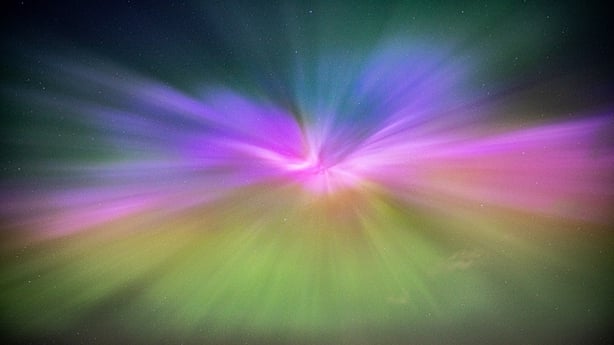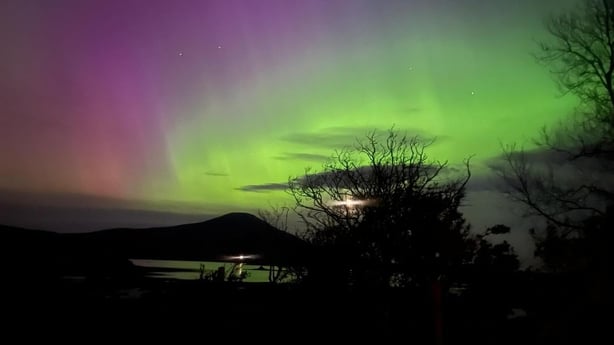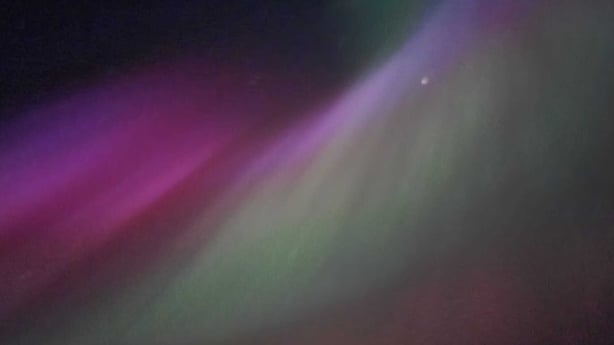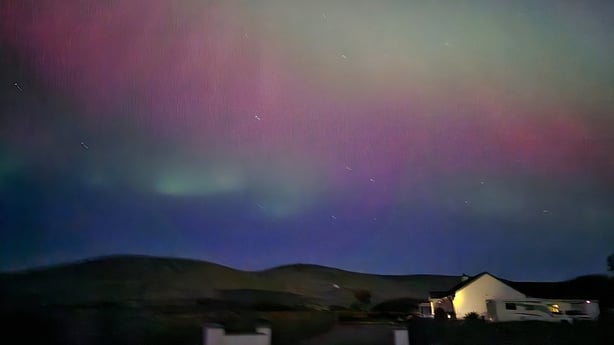Met Éireann has confirmed that the Northern Lights will be visible across Ireland again this evening, following a stunning display last night.
The Northern Lights were visible across the country after the most powerful solar storm in more than two decades.
The celestial light show, also known as aurora borealis, lit up the night sky with a display usually reserved for Iceland, Greenland and northern Scandinavia.
Aurora displays occur when charged particles collide with gases in the Earth's atmosphere around the magnetic poles.



Meteorologist Siobhán Ryan said that last night saw widespread dry and clear conditions, while tonight will be that bit more cloudy which will affect visibility.
She said that there is cloud moving in off the Atlantic, and that will begin to feed in over the northwest and west over the country on the western half of the country, and may bring showers as well.
Ms Ryan said that as a result, the most favourable areas to see the Northern Lights in Ireland early tonight will be in the north and east of the country, where conditions will be clearer than the rest of Ireland.
"Even here in Dublin there's an outside chance of witnessing the Northern Lights, so best of luck everyone."
She also recommended that budding astronomy enthusiasts will get the best chance to see the aurora during clear conditions in the early evening and early night in contrast to last night, when the best time to view came closer to midnight.


The beautiful #aurora over #Bray tonight. Spectacular #NorthernLights pic.twitter.com/2xPR6nQxOM
— Micheal Mac Suibhne (@MicMacSuibh) May 10, 2024
Spectacular #aurora pic.twitter.com/7sCsB57Sky
— Richard Dowling (@richardowling) May 10, 2024
Lost in a sea of stars..& the mesmerising dance of the #auroraborealis. #LÉGEORGEBERNARDSHAW #P64 conducting Maritime Defence & Security Operations under a sky painted with nature's most magnificent show is an experience that words can't capture#NorthernLights #IrishNavy #BeMore pic.twitter.com/ClBv1bdaoo
— Irish Naval Service (@naval_service) May 11, 2024
In the northern hemisphere, most of this activity takes place within a band known as the aurora oval, covering latitudes between 60 and 75 degrees.
When activity is strong, this expands to cover a greater area.






